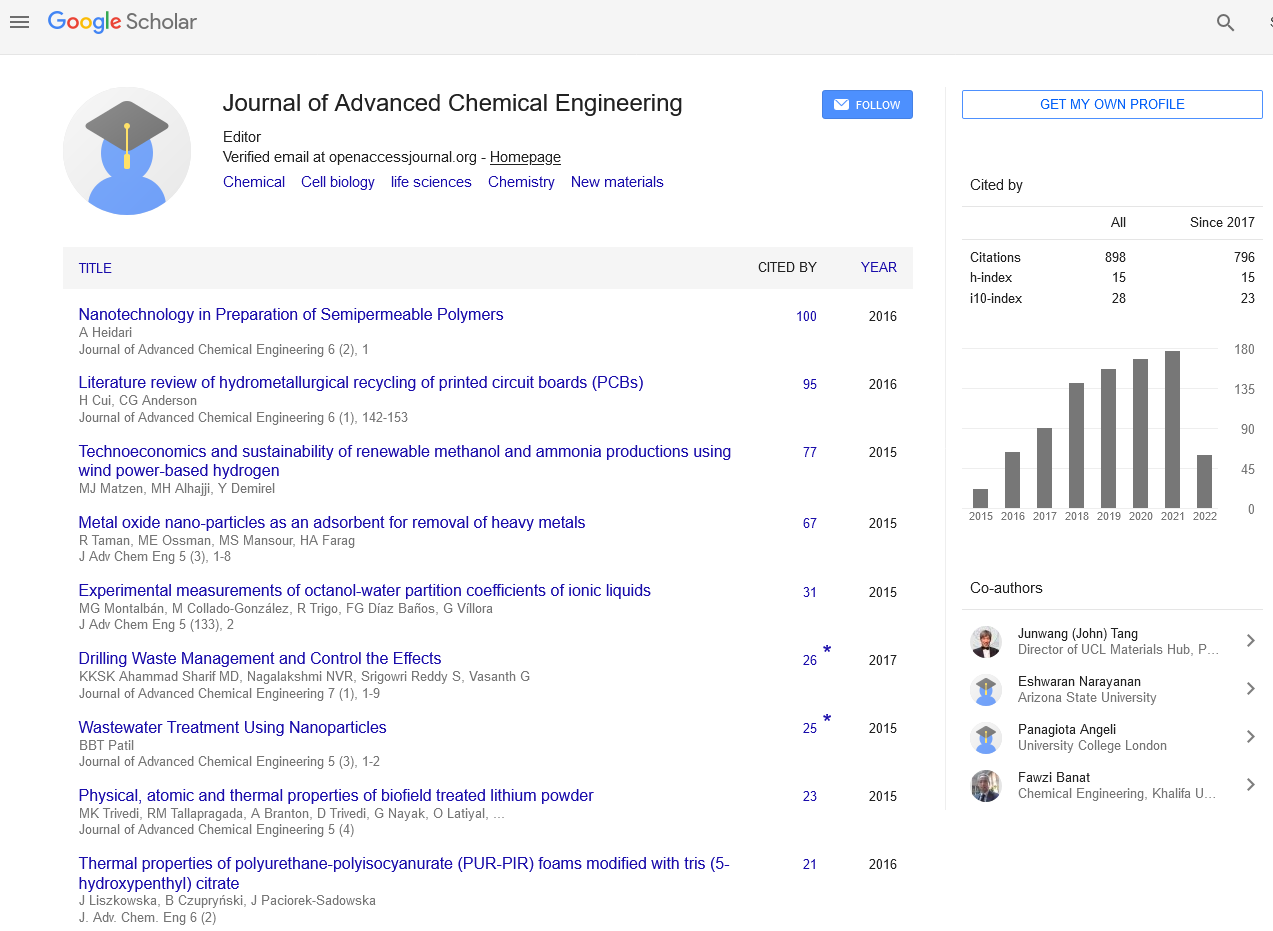Indexed In
- Open J Gate
- Genamics JournalSeek
- Smithers Rapra
- RefSeek
- Directory of Research Journal Indexing (DRJI)
- Hamdard University
- EBSCO A-Z
- OCLC- WorldCat
- Scholarsteer
- Publons
- Geneva Foundation for Medical Education and Research
- Google Scholar
Useful Links
Share This Page
Journal Flyer

Open Access Journals
- Agri and Aquaculture
- Biochemistry
- Bioinformatics & Systems Biology
- Business & Management
- Chemistry
- Clinical Sciences
- Engineering
- Food & Nutrition
- General Science
- Genetics & Molecular Biology
- Immunology & Microbiology
- Medical Sciences
- Neuroscience & Psychology
- Nursing & Health Care
- Pharmaceutical Sciences
Abstract
Attosecond Charge Migration in Non-covalently Bonded Clusters
Sankhabrata Chandra
In general, charge migration can occur via pure electron-electron correlation and relaxation or via coupling with nuclear motion. We must understand both aspects of charge migration through the noncovalent bond to harness full potential of the non-covalently bonded clusters. In my poster presentation, I have focused on the pure relaxation- and correlation-driven charge migration, subsequent charge localization and finally on charge directed reactivity in the noncovalent bonded clusters. Pure relaxation- and correlation-driven charge migration can occur in several hundred attosecond time scale and this is why chemical dynamics associated with this pure electronic charge migration can be named as “Attochemistry”. One of the efficient ways to elucidate the Attochemistry is via the vertical ionization by monitoring a non-stationary electronic charge density which evolves in time while the nuclear configuration remains unchanged. So far, Attochemistry of several halogen, chalcogen, pnicogen, and tetrel bonded clusters has been studied theoretically by our group. In my poster I shall present different aspects of charge migration e.g. electron correlation, inter-nuclear distance, driving force of charge migration, vibrational and rotational effect and charge directed reactivity. To probe such kind of pure correlation driven charge migration I shall show that high harmonic generation (HHG) spectroscopy will be useful. Construction of the HHG beamline and spectrometer will be presented. By using HHG spectroscopy, I shall show how fingerprint of attosecond charge migration can be found. Furthermore, I shall present the numerical simulation of HHG spectrum by solving the 1D- time dependent Schrödinger equation
Published Date: 2019-02-25;


